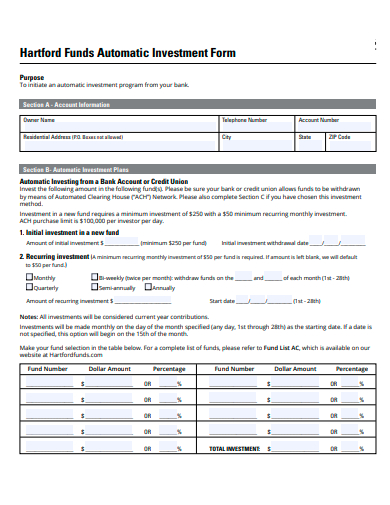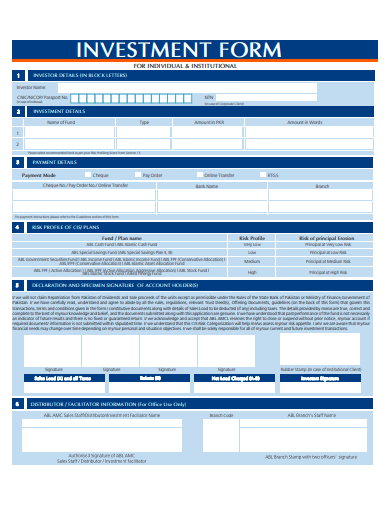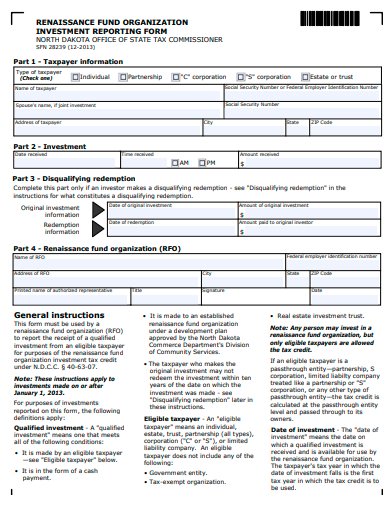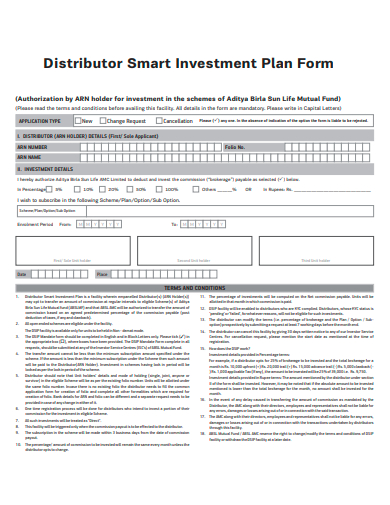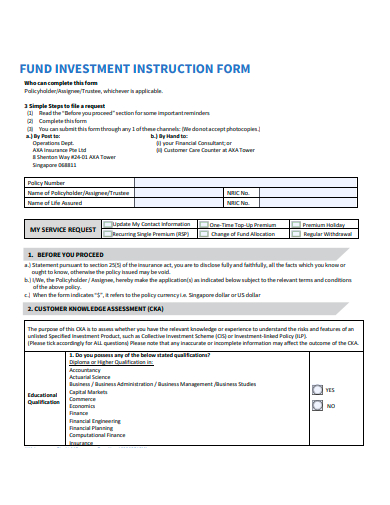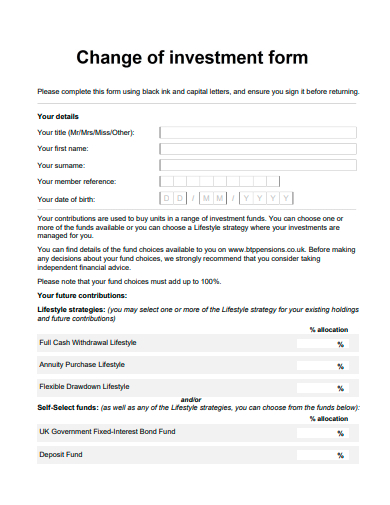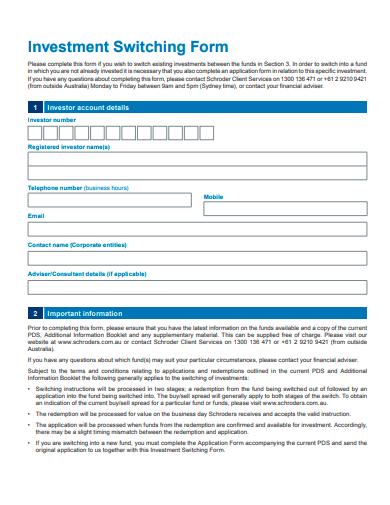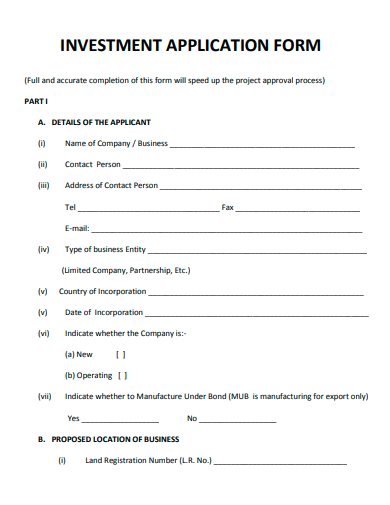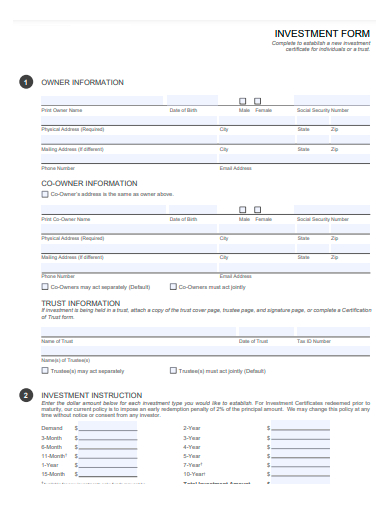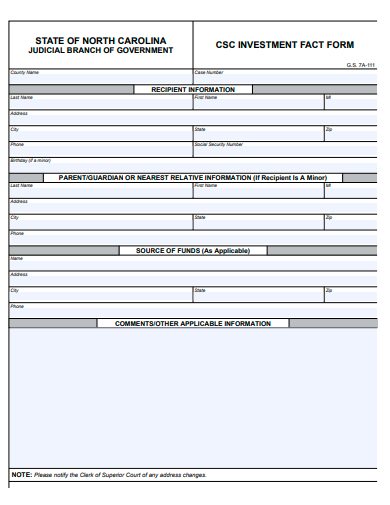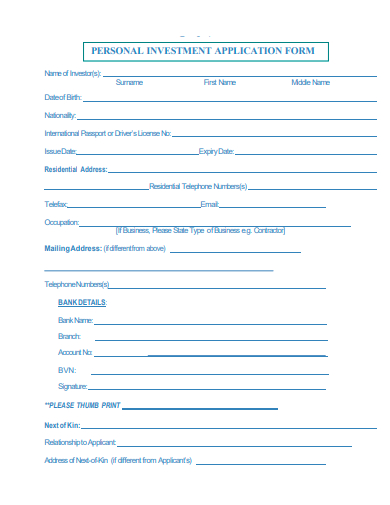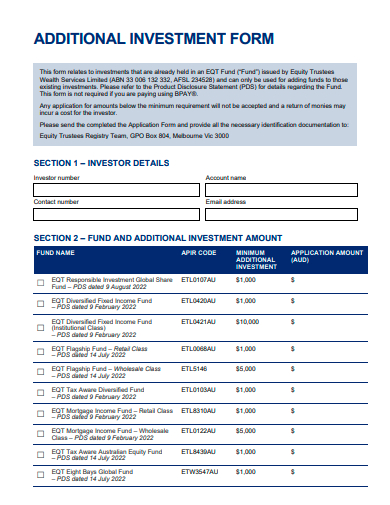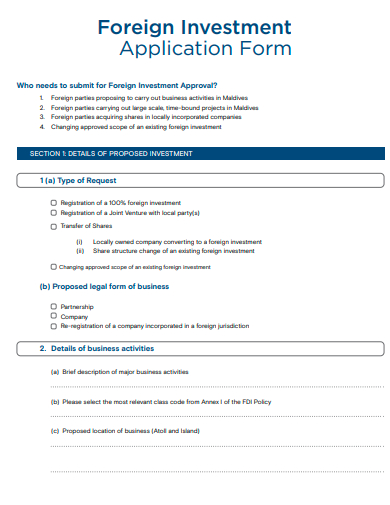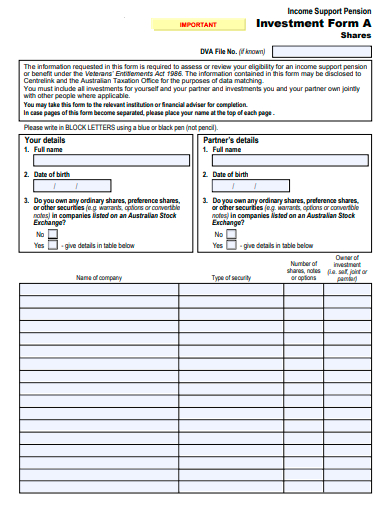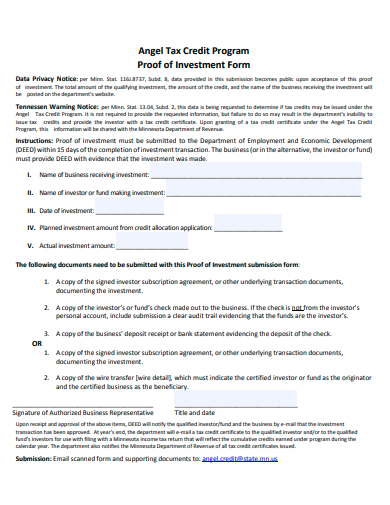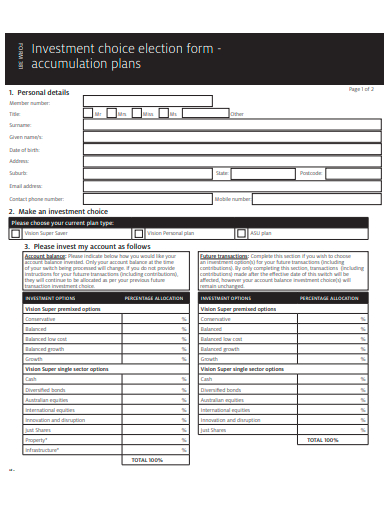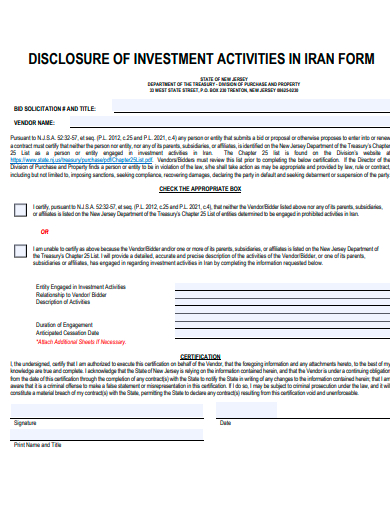Investment forms are diverse vehicles that allow individuals and businesses to allocate their capital strategically and generate potential returns. These investment options range from traditional avenues like stocks and bonds to newer forms such as exchange-traded funds (ETFs) and real estate. Understanding the various investment forms is essential for individuals seeking financial projections and businesses aiming to expand their operations management. Investments in human capital are crucial for businesses to attract, retain, and develop a skilled and motivated workforce. Businesses can invest in employee training action plan, professional development plan, attractive compensation packages, and employee benefits to enhance productivity skills, job satisfaction, and overall performance evaluation. Such investments contribute to the long-term success and sustainability of businesses.
20+ Investment Form Samples
1. Student Investment Form Template
2. Funds Automatic Investment Form Template
3. Investment Form Template
4. Investment Reporting Form Template
5. Distributor Smart Investment Plan Form Template
6. Fund Investment Instruction Form Template
7. Investment Withdrawal Form Template
8. Change of Investment Form Template
9. Alternative Investment Transaction Request Form Template
10. Investment Switching Form Template
11. Investment Application Form Template
12. Basic Investment Form Template
13. Investment Fact Form Template
14. Personal Investment Application Form Template
15. Additional Investment Form Template
16. Foreign Investment Application Form Template
17. Printable Investment Form Template
18. Proof of Investment Form Template
19. Investment Choice Election Form Template
20. Private Investment Form Template
21. Disclosure of Investment Form Template
What is Investment Form?
The term “investment form” refers to the specific type or structure through which individuals or businesses allocate their funds into various investment opportunities. It encompasses the different ways in which investments can be made, such as buying stocks, bonds, real estate properties, or participating in mutual funds, exchange-traded funds (ETFs), or other investment vehicles.
How To Make Investment Form?
Investment forms outline the specific characteristics, policies and procedures associated with a particular investment option. They typically dictate factors such as the level of risk involved, potential returns, liquidity, and investment duration. Creating an investment form involves a structured process to outline the key details and parameters of the investment opportunity. Here are the steps to make an investment form:
Step 1- Define the Investment Opportunity
Clearly articulate the purpose and nature of the investment opportunity. Specify whether it is a stock, bond, real estate property, mutual fund, ETF, or any other form of investment. Specify the key parameters of the investment, such as the investment amount, minimum and maximum investment thresholds, investment duration, and any specific eligibility criteria.
Step 2- Describe the Investment Strategy
Provide a detailed explanation of the investment strategy or approach that will be employed. This includes the investment objectives, target market or sector, risk profile, and any specific investment guidelines or restrictions.
Step 3- Specify Risk and Return Potential
Describe the risk and return characteristics of the investment. This can include an analysis of historical performance, expected returns, and potential risks associated with the investment form. Provide relevant information about liquidity, market volatility, and any potential regulatory or legal considerations.
Step 4- Document Terms and Conditions
Include the terms and conditions of the investment, such as redemption policies, dividend or interest payment schedules, voting rights (if applicable), and any fees or expenses associated with the investment. This section may also cover any rights or protections granted to the investor.
What are the different types of investment forms?
Some common types of investment forms include stocks, bonds, mutual funds, ETFs, real estate properties, commodities, options, and futures. Each investment form has its own characteristics, risk profiles, and potential rewards.
How do I choose the right investment form?
Choosing the right investment form depends on factors such as your investment objectives, risk tolerance, time horizon, and available capital. It’s important to research and understand the characteristics and risks associated with each investment form and align them with your financial goals.
What are the risks associated with investment forms?
Investment forms carry varying levels of risk. Stocks, for example, are subject to market volatility, while bonds may carry interest rate risk. Real estate investments can be affected by property market fluctuations. It’s important to assess and understand the risks associated with each investment form before making investment decisions.
Investment forms are critical vehicles for individuals and businesses seeking to grow their wealth and achieve financial objectives. Each investment form presents unique opportunities, risks, and considerations. Diversifying investments across different forms can help manage risk and optimize returns. It is essential to conduct thorough research, seek expert advice, and align investment decisions with individual goals, risk tolerance, and time horizons. By understanding and leveraging various investment forms effectively, individuals and businesses can embark on a journey toward financial growth and prosperity.
Related Posts
Sample Sworn Affidavit Forms
Vehicle Inspection Forms Samples & Templates
Sample Employee Advance Forms
Sample Child Travel Consent Forms
Sample Testimonial Request Forms
Sample Employee Details Forms
Sample Divorce Forms
Sample Attestation Forms
Employee Performance Appraisal Form Templates
FREE 9+ Sample Presentation Evaluation Forms in MS Word
FREE 10+ School Admission Form Samples & Templates in MS Word | PDF
FREE 30+ Patient Consent Form Samples in PDF | MS Word
FREE 10+ Sample Sign Off Form Templates in PDF | MS Word
FREE 11+ Sample Medical Consultation Forms in PDF | MS Word
FREE 8+ Sample Donation Forms in PDF | MS Word


